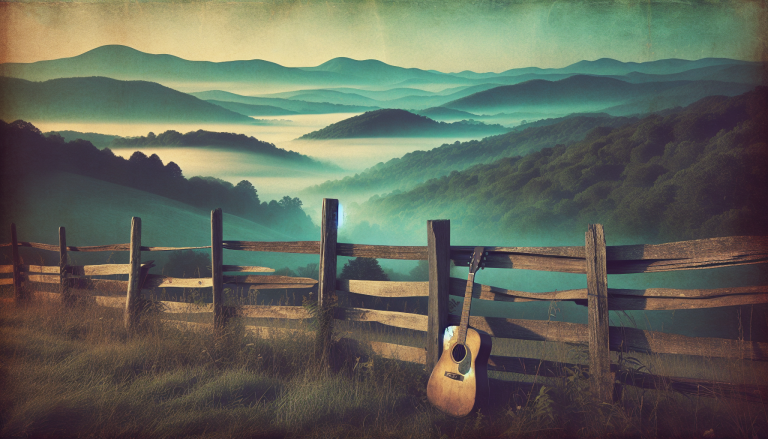The Soulful Echoes of Appalachian Music: A Journey Through America’s Musical Heartland
Roots of the Mountains: Understanding Appalachian Musical Heritage
In the misty hollows and rolling mountains of Appalachia, a profound musical tradition has taken root—a sound that captures the essence of American resilience, storytelling, and cultural survival. Appalachian music stands as a testament to the human spirit, weaving together threads of immigrant influences, mountain life, and raw emotional expression that continues to resonate across generations.
The historical context of Appalachian music is a rich tapestry of cultural convergence. Settlers from Scotland, Ireland, England, and Germany brought their musical traditions to the isolated mountain regions, blending these European folk styles with African American musical influences and Native American rhythms. These mountain communities, often disconnected from mainstream society, preserved and transformed musical traditions in ways that would ultimately shape American roots music.
Instruments and Sound: The Musical Landscape of the Appalachian Tradition
Appalachian music is characterized by its distinctive instrumentation and raw, unfiltered emotional delivery. The banjo, brought to America by enslaved Africans, became a cornerstone of the genre, alongside fiddles, dulcimers, and acoustic guitars. These instruments created a sound that was simultaneously melancholic and jubilant, reflecting the complex experiences of mountain communities.
The music emerged from a world of hard labor, spiritual struggle, and profound connection to the land. Coal mining, farming, and the challenges of mountain life found expression through ballads that told stories of love, loss, work, and survival. Each song became a living historical document, preserving the oral traditions of communities often overlooked by mainstream historical narratives.
Legendary Artists and Their Enduring Legacy
Several artists became pivotal in bringing Appalachian music to broader audiences. Jean Ritchie, often called the “Mother of Folk,” was instrumental in documenting and preserving traditional mountain music. Her dulcimer playing and authentic presentations introduced urban audiences to the depth and complexity of Appalachian musical traditions.

Ralph Stanley, a bluegrass pioneer, embodied the raw emotional power of mountain music. His haunting vocals and traditional approach kept the authentic spirit of Appalachian music alive, influencing generations of musicians across multiple genres.
The Carter Family—A.P., Sara, and Maybelle Carter—represent another crucial chapter in Appalachian musical history. Their recordings in the 1920s and 1930s helped define the sound of American roots music, bridging traditional mountain styles with emerging commercial country music.
Notable Recordings: Capturing Musical Narratives
Certain recordings stand as pivotal moments in Appalachian musical documentation. The Library of Congress recordings by musicologist Alan Lomax in the 1930s and 1940s captured performances that might otherwise have been lost to history. Songs like “Barbara Allen” and “Pretty Polly” became archetypal examples of mountain ballad traditions.
The soundtrack to the film “O Brother, Where Art Thou?” in 2000 brought Appalachian and old-time music to a massive contemporary audience, featuring artists like Ralph Stanley and showcasing the timeless appeal of these musical traditions.
Cultural Impact and Musical Evolution
Appalachian music’s influence extends far beyond its geographical origins. Its DNA can be found in bluegrass, country, folk, and even rock music. The storytelling tradition, characterized by intricate narratives and emotional depth, has profoundly shaped American musical expression.
The genre represents more than just music—it’s a form of cultural resistance and preservation. In a rapidly changing world, Appalachian music continues to serve as a powerful reminder of community resilience, historical memory, and the transformative power of artistic expression.
Modern musicians like Gillian Welch and Tyler Childers have continued to honor and reinterpret Appalachian musical traditions, proving that these sounds remain vibrantly relevant. They demonstrate how deeply rooted musical traditions can speak to contemporary experiences while maintaining their historical integrity.
As musicologist Ralph Rinzler once noted, “Appalachian music is not a museum piece. It’s a living, breathing tradition that continues to evolve and speak to new generations.”
Preserving a Musical Heritage
Today, numerous institutions and festivals work to document and celebrate Appalachian musical traditions. The Appalachian String Band Music Festival in Clifftop, West Virginia, and the International Bluegrass Music Museum in Kentucky serve as crucial sites of cultural preservation and celebration.
The story of Appalachian music is fundamentally an American story—a narrative of cultural blending, survival, and artistic innovation. It represents a musical tradition that emerged from specific geographical and historical conditions yet speaks to universal human experiences of struggle, joy, and connection.
From the plaintive notes of a mountain dulcimer to the driving rhythms of a bluegrass ensemble, Appalachian music continues to remind us of the profound musical heritage embedded in America’s cultural landscape.